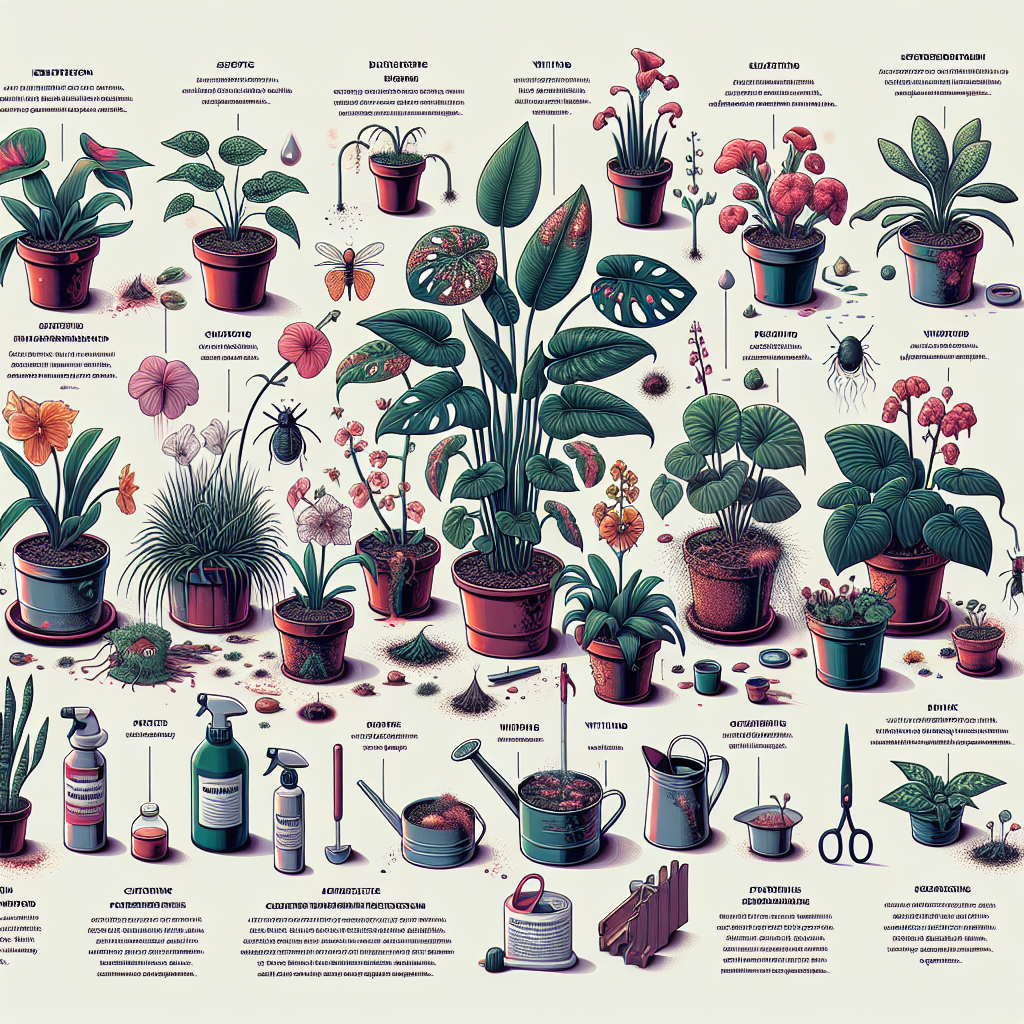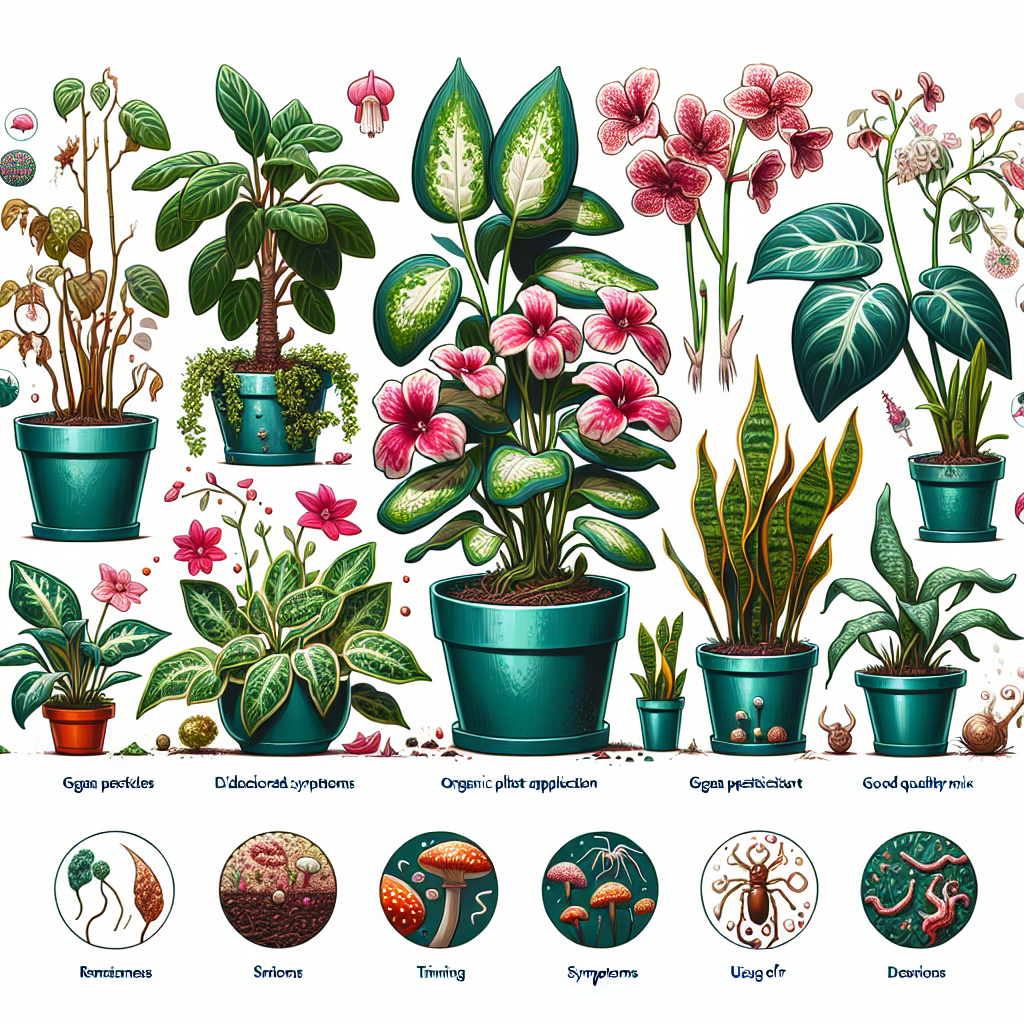
Indoor flowers can bring a touch of nature into our homes, adding beauty and a sense of tranquility. However, just like outdoor plants, indoor flowers are susceptible to a variety of diseases. Understanding these diseases and knowing how to deal with them is crucial for maintaining the health and beauty of your indoor garden. In this article, we will explore common indoor flower diseases, their symptoms, causes, and effective treatment methods.
Common Indoor Flower Diseases
Indoor flowers can be affected by a range of diseases, each with its own set of symptoms and causes. Here are some of the most common diseases that can afflict your indoor plants:
1. Powdery Mildew
Powdery mildew is a fungal disease that appears as a white or gray powdery coating on the leaves, stems, and flowers of plants. It thrives in warm, dry conditions and can spread rapidly if not controlled.
Symptoms
- White or gray powdery spots on leaves and stems
- Distorted or stunted growth
- Yellowing or browning of leaves
Causes
- High humidity levels
- Poor air circulation
- Overcrowded plants
Treatment
- Remove and dispose of infected plant parts
- Improve air circulation by spacing plants appropriately
- Use fungicidal sprays or homemade remedies like a mixture of baking soda and water
2. Root Rot
Root rot is a serious disease caused by overwatering and poor drainage. It affects the roots of the plant, leading to their decay and eventual death if not treated promptly.
Symptoms
- Wilting or yellowing leaves
- Soft, mushy roots with a foul odor
- Stunted growth
Causes
- Overwatering
- Poor drainage
- Soil that retains too much moisture
Treatment
- Remove the plant from its pot and inspect the roots
- Trim away any affected roots with sterilized scissors
- Repot the plant in fresh, well-draining soil
- Adjust watering habits to prevent future occurrences
3. Leaf Spot
Leaf spot is a common fungal or bacterial disease that causes dark, circular spots on the leaves of plants. It can weaken the plant and reduce its overall vigor.
Symptoms
- Dark, circular spots on leaves
- Yellowing or browning of affected areas
- Premature leaf drop
Causes
- High humidity levels
- Overhead watering
- Infected plant debris
Treatment
- Remove and dispose of infected leaves
- Avoid overhead watering and water at the base of the plant
- Use fungicidal sprays if necessary
Preventive Measures
Prevention is always better than cure when it comes to indoor flower diseases. By taking a few simple steps, you can significantly reduce the risk of your plants becoming infected.
1. Proper Watering
One of the most common causes of indoor flower diseases is improper watering. Overwatering can lead to root rot, while underwatering can stress the plant and make it more susceptible to diseases.
- Water plants only when the top inch of soil is dry
- Ensure pots have drainage holes to prevent waterlogging
- Avoid overhead watering to reduce the risk of fungal infections
2. Good Air Circulation
Good air circulation is essential for preventing fungal diseases like powdery mildew. Stagnant air can create a humid environment that promotes the growth of fungi.
- Space plants appropriately to allow for air movement
- Use fans to improve air circulation in enclosed spaces
- Avoid placing plants too close to walls or other surfaces
3. Regular Inspection
Regularly inspecting your plants can help you catch diseases early before they spread. Look for any signs of distress, such as yellowing leaves, spots, or unusual growth patterns.
- Check plants weekly for any signs of disease
- Isolate any infected plants to prevent the spread of disease
- Remove and dispose of any dead or decaying plant material
Case Studies
To better understand how to deal with indoor flower diseases, let’s look at a couple of real-life case studies.
Case Study 1: Powdery Mildew on African Violets
Jane, an avid indoor gardener, noticed a white powdery substance on the leaves of her African violets. Upon closer inspection, she identified it as powdery mildew. Jane took the following steps to treat the disease:
- Removed and disposed of all infected leaves
- Improved air circulation by spacing her plants further apart
- Applied a homemade fungicide made from baking soda and water




